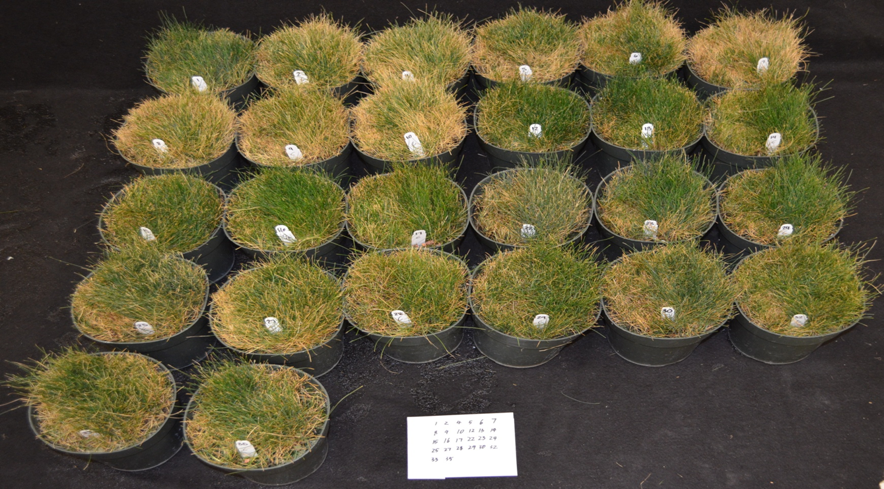By Bingru Huang, Rutgers University
Heat stress is a primary limiting factor for the growth of cool-season turfgrass species, as the optimal temperature for these species are between 60 and 75 oF, but summer temperatures in many areas are often much higher than this temperature range. One of the most desirable traits for cool-season turfgrasses, such as fine fescue, is good heat tolerance, which enables sustainable turf growth through hot summer months with reduced inputs.
As turfgrass researchers, we take systematic approaches to understand physiological traits, metabolic processes, and molecular factors associated with heat tolerance. Such information is of great importance for improving heat tolerance. Physiological traits and molecular markers may be used develop heat-tolerant cultivars through breeding. Candidate genes linked to heat tolerance may be used for genetic modification via genetic engineering to develop heat-tolerant germplasm.
Our physiological analysis of comparing heat tolerance among fine fescue species found interspecific and intraspecific variations in heat tolerance among fine fescue species and cultivars, with a hard fescue exhibiting greater intraspecific variation (Figure 1). Further biochemical analysis has shown that superior heat tolerance in a heat-tolerant hard fescue cultivar, ‘Reliant IV’, was associated with active amino acid metabolism and the production of secondary metabolites, including sterols and phenolic compounds. Through transcriptomic analysis, we found that many genes enriched in ‘Reliant IV’ in response to heat stress are involved in oxidation-reduction activity, secondary metabolism, and cell wall construction. Molecular markers linked to those unique genes and metabolic processes associated heat tolerance can be developed, which will be useful in marker-assisted breeding selection of heat-tolerant fine fescue, which can then be used in low-maintenance areas.
